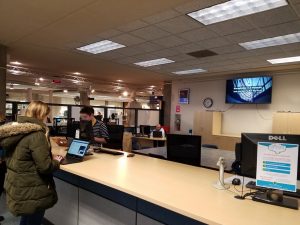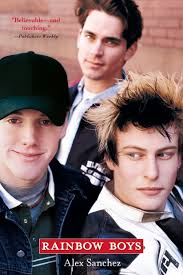A couple new avenues have opened in our research as the approach Liz and I hope to take also becomes more clear. We’ve began to think about our eventual project as one that intends to represent multiple perspectives: student, author, librarian, administrator, teacher, and community member. Hearing voices from all of these perspectives will be somewhat challenging and some might be more prominent or detailed than others, but we’re already pretty well on our way. I imagine an eventual menu on our WordPress site that allows someone to view our project through the lens of these varying perspectives. At the point of the last blog progress report, I had contacted the Webster Thomas librarian Trish Warren, learned her account of the challenge and temporary ban to Rainbow Boys, and made plans to have an official interview with her over spring break. Since then, Liz has emailed the district in an attempt to track down the name of one or more of the challenging community members, though progress with the district has been slow. This comes after I initially emailed the superintendent and asked if there were any records from this case and was told “no, there are not,” but Liz and I figure we will look at the meeting records ourselves.
Our continued search for these records was inspired by Carly Maldonado, the older sister of one of my friends from home. Carly’s name came up when we found an op-ed she wrote to the Rochester newspaper, Democrat and Chronicle during the challenge to voice her opposition to the district’s position. I emailed Carly for more information and she broadened what we are now calling the student perspective, sharing how the issue was addressed in town and school, her efforts to gain acess to the district decision making process, and her impressions of the district’s policies at that time. I asked Carly if she knew the name of the challenger, and she did not, but she recommended the board minutes from the summer of 2006 as a place to find it, hence Liz’s renewed quest to have the district send them to us. Carly also named a since-retired teacher from that time who was involved in a way that was not made entirely clear but that she would probably be willing to share her perspective of the issue with us if we reached out to her on Facebook which Liz has since done.
Meanwhile, in my “Topics in Secondary English” class just today, an interesting supplemental case was revealed to me by a student who also went to my high school. This student, Devin, told me that she was involved in arguing against an even more recent case of a challenged book in Webster where Perks of Being a Wallflower was removed from our school library. Again, totally surprised because I never knew of any challenge in Webster and now there’s two!

From WebsterSchools.org
Though the Perks challenge does not come up on the internet, I’m going to email Devin to get more information because I think it could provide interesting context and comparison material for our investigation of Rainbow Boys. Through all of these cases it’s important to think about the context in which these contributors were raised in terms of education, generation etc. because as the Downs article we discussed explains, the prevailing attitudes on censorship have shifted dramatically in the last century.


